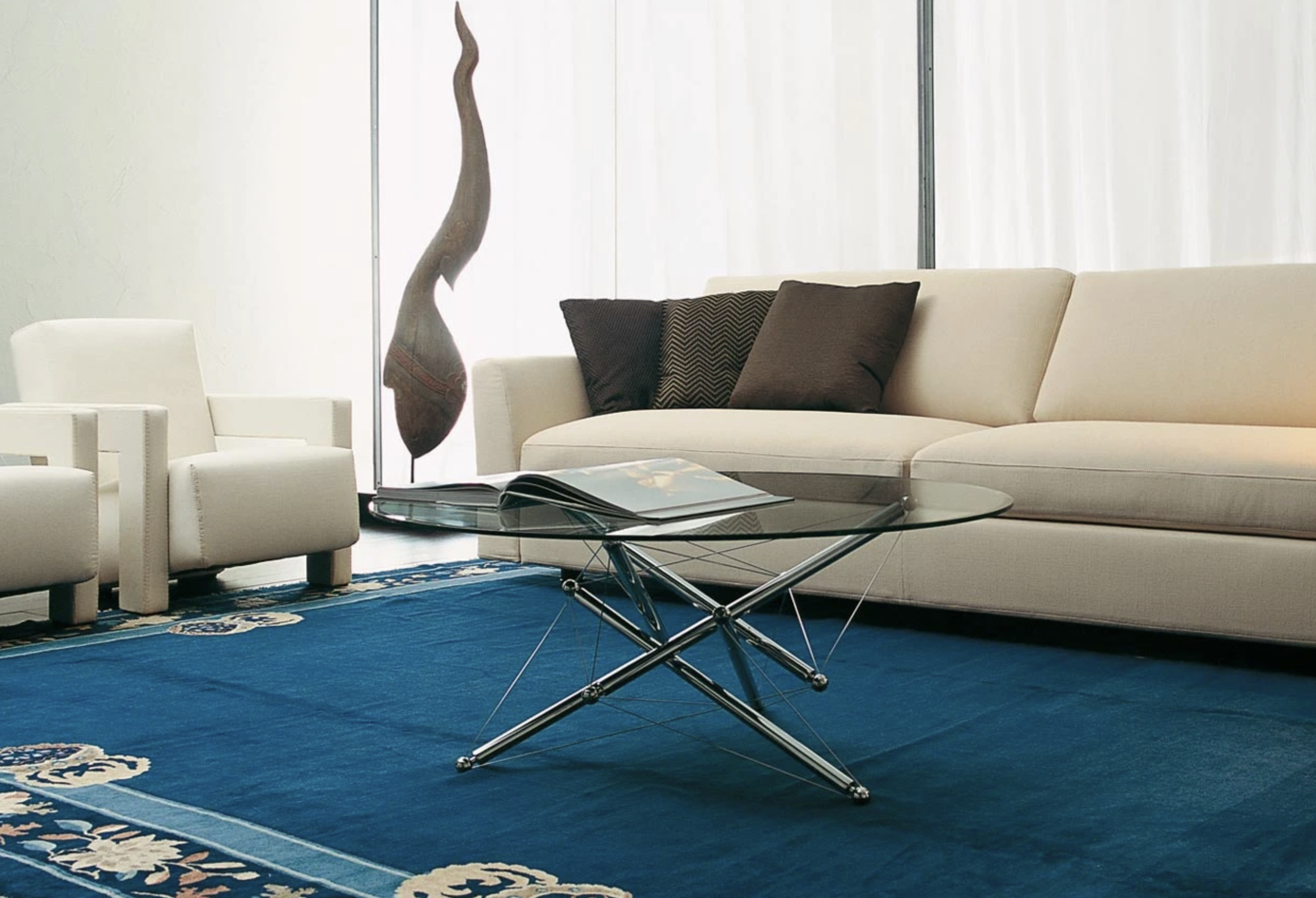713/714 Coffee Table

The term "tensegrity structure", coined by Buckminster Fuller, refers to structures of pure tension and compression, without any bending forces. The compression elements or legs in this case, are held apart by wires, attached only to themselves. In 1972 this type of structure had not yet been used in furniture. It offered an ideal way to hold something up with wire. T.H. Waddell and Cassina, Milan have produced the 713/714 Coffee Table since 1973.
These tables have six legs of which three hold the glass top, but do not touch the floor. The other three rest on the floor but do not touch the glass top. None of the six legs touch the others. A conventional tensegrity structure would have connecting wires between the extreme tips of the legs, which would give more strength, but would mean three wires at the plane of the floor and three wires right under the glass.
The final star-burst structure was invented independently by T.H. Waddell. At the time there were no computers to calculate the wire lengths which would give optimum spacing, so the entire prototype was made with a jig to hold the legs and turnbuckles to alter the wire lengths. Weeks of trial and error kept producing solutions with high and low limits, but loose in between, before finally arriving at the proper proportions.

Creating an illusion of structural improbability.
-T.H. Waddell



